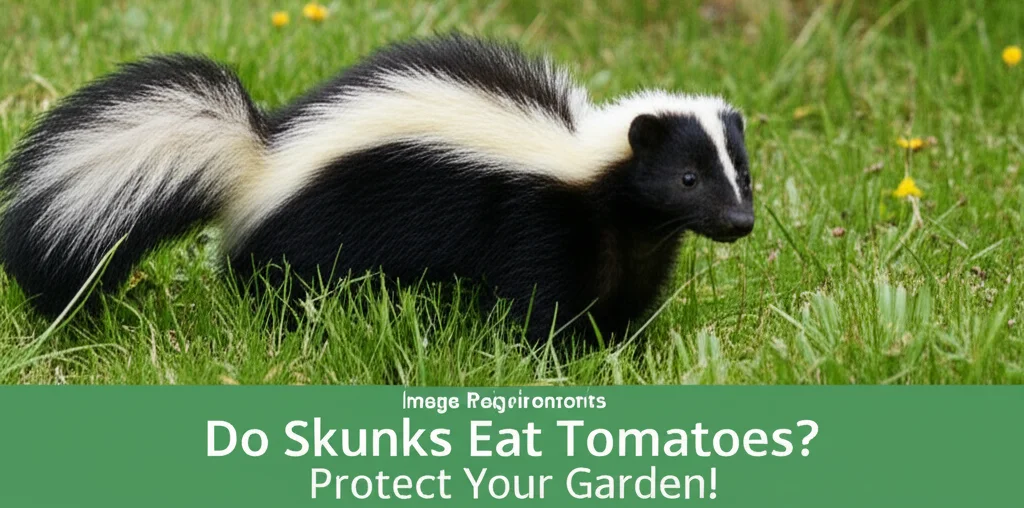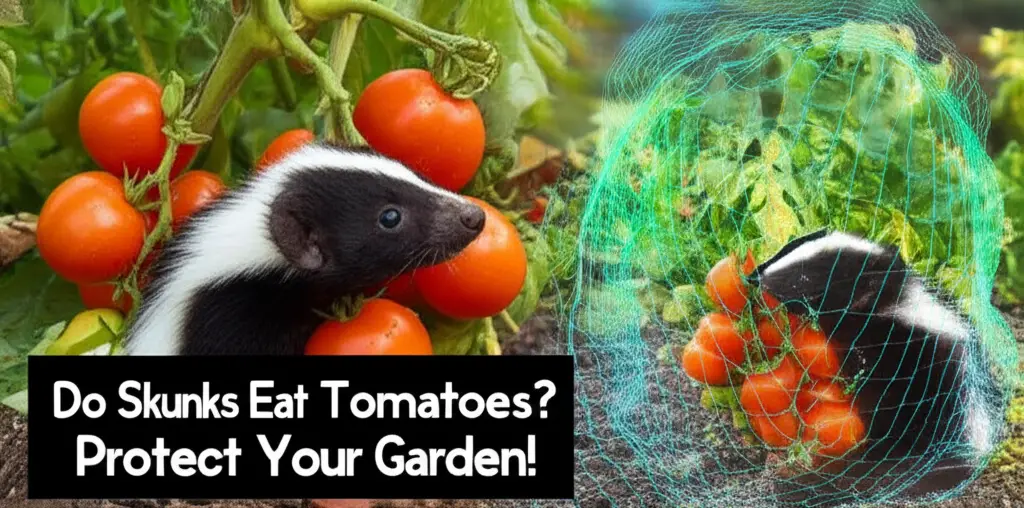Yes, they can. While not their primary food source, skunks are opportunistic omnivores and might nibble on your prized tomatoes, especially if other food sources are scarce. This comprehensive guide will explore the skunk’s diet, why they might target your garden, the signs of skunk damage, and most importantly, how to effectively protect your tomato plants from these striped raiders.
This post explores whether skunks eat tomato plants, examining the reasons behind this behavior, signs of skunk damage, and effective prevention methods. We’ll discuss everything from fencing and repellents to understanding the skunk’s diet and habits.

Understanding the Skunk’s Diet
Skunks are opportunistic omnivores, meaning their diet consists of both plants and animals. Their preferred foods include insects, grubs, rodents, eggs, and berries. They also occasionally consume fruits, vegetables, and nuts. While tomato plants aren’t a staple in their diet, they might be tempted to snack on ripe tomatoes, especially if other food sources are limited, due to drought or overpopulation for example. They’re attracted to the sweet scent and juicy flesh, much like other garden pests.
Why Do Skunks Target Gardens?
Several factors contribute to skunks venturing into gardens, particularly those with tomato plants:
- Food Scarcity: During periods of drought or when their usual food sources are scarce, skunks are more likely to seek alternative food options, including garden produce.
- Easy Access: Gardens with low fences or no barriers provide easy access to tempting treats like tomatoes.
- Grubs and Insects: Skunks are primarily insectivores. They are attracted to gardens that harbor grubs, insects, and other invertebrates residing in the soil around tomato plants. They may dig around the base of the plants looking for these tasty morsels, inadvertently damaging the roots in the process.
- Water Source: If your garden has a readily available water source, like a birdbath or dripping faucet, it might attract skunks, especially during hot weather.
Signs of Skunk Damage to Tomato Plants
Recognizing skunk damage is crucial for implementing timely preventative measures. Here are some tell-tale signs:
- Shallow Holes and Digging: Skunks often dig small, conical holes in the soil around the base of plants while searching for grubs.
- Damaged Fruits: Look for bite marks or partially eaten tomatoes, often near the ground.
- Uprooted Seedlings: While less common, skunks might uproot young seedlings while foraging.
- Skunk Droppings: Dark, cylindrical droppings containing insect remnants are a clear sign of skunk activity.
Protecting Your Tomato Plants from Skunks
Now that we’ve established that skunks can be a problem, let’s explore the most effective ways to protect your precious tomato plants:
Physical Barriers:
- Fencing: Installing a sturdy fence around your garden is one of the best ways to keep skunks out. The fence should be at least 12 inches high and buried several inches below ground to prevent skunks from digging underneath. Consider using chicken wire or hardware cloth with small mesh.
- Row Covers: Floating row covers offer a lightweight and effective barrier against skunks and other pests. Ensure the covers are securely fastened to the ground to prevent skunks from lifting them.
Repellents:
- Commercial Repellents: Several commercial skunk repellents are available. Look for those containing natural ingredients like castor oil, peppermint oil, or capsaicin. – [Link to a relevant article/product on Amazon or a gardening website]
- DIY Repellents: You can create your own repellent by mixing a combination of ammonia, water, and dish soap. Soak rags in the mixture and place them strategically around your garden. Reapply regularly, especially after rain. (Caution: Ammonia can be harmful to plants if used in high concentrations.)
- Motion-Activated Sprinklers: These can effectively deter skunks by startling them with a sudden burst of water.
Habitat Modification:
- Remove Attractants: Eliminate potential food sources that might draw skunks to your garden. This includes securing garbage cans, removing fallen fruit, and controlling insect populations.
- Eliminate Hiding Places: Keep your garden clean and free of debris, brush piles, and woodpiles, which can provide shelter for skunks.
FAQs
- What other animals eat tomato plants? Besides skunks, other common culprits include raccoons, deer, squirrels, rabbits, and birds.
- Are there any plants that repel skunks? While no plant completely repels skunks, some plants with strong scents, like crown imperial, marigolds, and certain herbs, might discourage them.
- What should I do if I see a skunk in my garden? Do not approach or attempt to scare the skunk. Slowly and quietly back away and give the animal plenty of space to retreat.
- Are skunks dangerous? Skunks are generally not aggressive but can spray a foul-smelling musk if they feel threatened. They can also carry rabies, so it’s important to avoid direct contact.
Conclusion
While skunks can eat tomato plants, they’re not typically a gardener’s biggest enemy. By understanding their habits and implementing preventative measures like fencing, repellents, and habitat modification, you can effectively protect your tomato plants and enjoy a bountiful harvest. Remember to keep your garden clean, eliminate attractants, and create a less inviting environment for these striped visitors. With a bit of vigilance and the right strategies, you can coexist peacefully with skunks and keep your tomatoes safe from harm.

